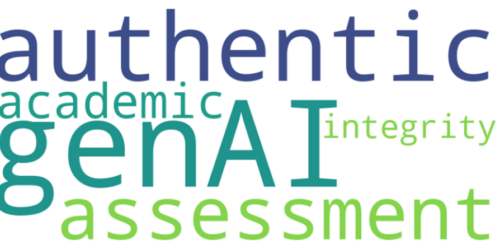
Two Stories of Testing in the Cloud
This Faculty Story was co-written by Mariam Raza (Office Administration, Administrative Business Management) and Trish Stevenson (Public Relations).

Mariam Raza has 15+ years of business support, executive support, and operational management experience. She joined Conestoga in 2017, teaching in the Office Administration certificate and diploma programs, and later in the Administrative Business Management graduate certificate program. She is a process enthusiast and is always trying to improve, streamline, and mitigate risk in operational and functional tasks. She has always leveraged technology as a means to save the time and energy of herself and others.

Trish Stevenson has 20+ years of broadcasting and communications experience. She joined Conestoga in 2017, teaching in the public relations diploma program, of which she is now the coordinator. She is a communicator by heart. Our PR team across the diploma, degree and graduate certificate are committed collaborators dedicated to supporting our students’ academic and professional goals.
Mariam’s Testing Context
Last year in the ABM program, I was finding myself a bit lost in how to convert the rich in-class simulation activities to an online system that would be able to mimic the same type of urgency, task management, and workplace feeling, all while sustaining a high level of academic integrity. I turned to OneDrive to find a solution.
It was vital for me that students were not tempted to take part in unauthorized collaboration. The activities in the flagship Administration Management course cycle between group work and individual work each week for five modules and are highly individualized for each student. I ensure that no more than two students receive the same scenarios. Each module required students to produce work in class and submit at the end of class. The time-sensitive nature of the assessments was always a challenge, but how would I offer my support and guidance quickly and equitably now that we were online?
The Assessment in the OneDrive
I created folders for each module and added start-up files for each student with customized file names. Before class, I used the ‘share’ function to allow only a specific person to access the file. This meant that the specific student who was added to that document received an email alerting them that their professor had shared a document with them. Students click on the email prompt and are led to the document, while OneDrive alerts the teacher that the student accessed a document.
During class, I was once again able to ‘watch’ my students while they worked! By popping in and out of each student’s document, I saw what they were working on and left bubble comments on items I wanted to provide feedback. Some students left questions in the bubble comments, and I answered them as I moved in and out of each document. The version history allowed me to look at versions of each document and understand how the work was progressing. Any instance of a large chunk of text from one version to the next was a red flag for me.
The biggest help for me was that students had to work in a specific document and were not allowed to work in other documents at all. The metadata for all files was my own, and I could see who was working, their pace, and if anyone had not accessed the document. I could also see when large chunks of information were pasted into a document between versions within a specified amount of time. These functions helped in identifying any unethical behaviour that may have occurred and secured the document between myself and the student. Lastly, students upload to econestoga/Turnitin by the specified time.
I will always use this system going forward, even for on-campus/face-to-face assessments. It takes a bit of time investment at the front end but saves so much time when marking.
Trish’s Testing Context
Communications and public relations require strong writing skills. Our students may find themselves, upon graduation, in a fast-paced environment where they must produce original content quickly, creatively, and accurately. Switching up the assignments and various forms of writing styles can help exercise that muscle. Working in OneDrive during class has been a great collaboration tool. Students were also familiar with this method of sharing work for group projects.
The class assignment on OneDrive created a different writing environment from previous evaluations, while also addressing a rising issue: academic integrity. The rise of contracted papers in academics is of great concern. Turnitin is a good tool for looking at plagiarized work, but original work that students do not write themselves is much more difficult to assess. I was looking for a way to see the student’s work progress while in the moment and thought this was a good start.
The Assessment in the OneDrive
Each student was given an individual case study to which only that student and I had access. Students were instructed to only write in the OneDrive document. There was no allowance for writing in a separate word document and copying over the finished product into their OneDrive paper. Track changes remained on so we could see progress made in the assignment over time. Therefore, copying and pasting were negated as the document tracked if content appeared in chunks of text. Final products were then submitted to eConestoga and run through Turnitin.
The assignment seems to have helped on a few levels. As faculty, I was able to drop into the assignment and see progress made. I could make comments directly in the student’s live document and monitor who was working, who had not started, and who had not opened the document at all. It helped students showcase their learning in a live environment and ask questions as they progressed. In my experience, it meant some heavier lifting as faculty in the beginning to create the assignments. However, it alleviated work at the end of the assignment. No tracking down contracted papers. It was documented in great detail what students worked on, when, how often they wrote, and if they had participated at all. It also helped with marking, as I was already quite familiar with the papers when they were handed in.






